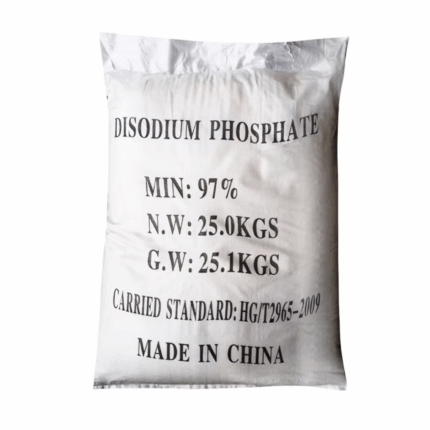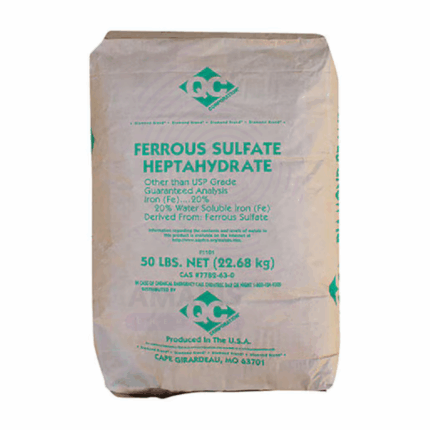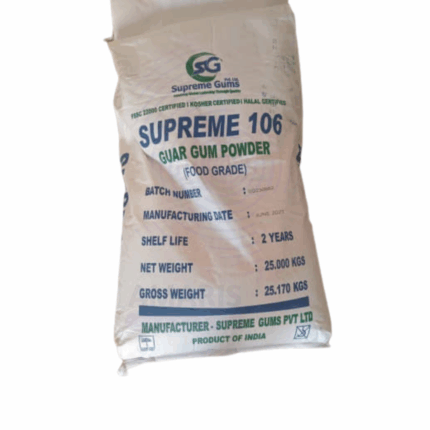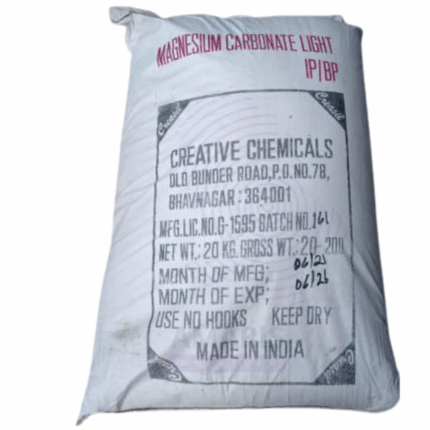“Aluminium Sulphate Alum Rock” has been added to your cart. View cart
Flax
Whatsapp Order
Flax (Linum usitatissimum) is an ancient crop cultivated primarily for its seeds and fibers. The flax seeds are small, flat, and oval, ranging from golden yellow to brown in color, and are rich in nutrients including omega-3 fatty acids (alpha-linolenic acid), lignans, dietary fiber, proteins, and vitamins. Flax fibers are derived from the stem and used in textile and industrial applications. Flaxseed oil, extracted from the seeds, is highly valued for its nutritional and therapeutic properties. Flax is utilized across food, nutraceutical, cosmetic, pharmaceutical, and industrial sectors due to its multifunctional health benefits, fiber content, and sustainable nature.
Categories: Soil Conditioners, Nutrient Supplements, Whole Spices
Tags: Flax, Flax Oil, Flaxseed, Linseed, Nutritional supplement, Omega-3 Source, Superfood
Description
Table of Contents
Toggle
Flax
Primary Uses
- Food Industry
- Used as a nutritional supplement and ingredient in baked goods, cereals, smoothies, and snacks for its high fiber, omega-3 fatty acids, and protein content.
- Ground flaxseed (flax meal) is widely added to bread, muffins, and cereals to enhance nutritional profiles and provide dietary fiber.
- Flaxseed oil is used as a culinary oil, salad dressing, and nutritional supplement, prized for its omega-3 fatty acids.
- Acts as a natural egg substitute (flax egg) in vegan and allergen-free baking.
- Incorporated in functional foods targeting cardiovascular health, digestive wellness, and weight management.
- Nutraceuticals and Dietary Supplements
- Formulated in capsules, oils, and powders to promote heart health by reducing cholesterol and blood pressure.
- Used for hormonal balance support due to its phytoestrogenic lignans.
- Supports digestive health by promoting regularity through high soluble and insoluble fiber content.
- Exhibits antioxidant and anti-inflammatory properties beneficial for chronic disease prevention.
- Cosmetics and Personal Care
- Flaxseed oil is incorporated into skin and hair care products as a natural moisturizer, emollient, and anti-inflammatory agent.
- Used in formulations to improve skin barrier function, reduce dryness, and soothe irritation.
- Flax-derived compounds are employed in anti-aging and acne care products due to their antioxidant effects.
- Applied in hair conditioners and serums to enhance hair strength and shine.
- Pharmaceutical Industry
- Investigated for therapeutic effects in cardiovascular disease, diabetes management, and certain cancers.
- Used as a source of bioactive lignans and omega-3 fatty acids in formulations targeting metabolic health.
- Employed in wound healing and anti-inflammatory preparations.
- Textile and Industrial Applications
- Flax fibers are used extensively in the production of linen textiles, ropes, composites, and eco-friendly packaging materials.
- Applied in biodegradable and sustainable composite materials for automotive and construction industries.
Secondary Uses
- Animal Feed
- Flaxseed meal is used as a high-protein, high-fiber feed additive for poultry, cattle, and aquaculture, enhancing omega-3 content in animal products.
- Biomedical Research
- Studied for its lignans and omega-3s in anti-cancer and anti-inflammatory research.
- Investigated as a scaffold material in tissue engineering due to flax fiber properties.
- Environmental Applications
- Flax straw and fiber used in erosion control mats and biodegradable geotextiles.
PRODUCT KEY FEATURES
- Basic Identification Attributes
- Scientific Name: Linum usitatissimum
- Common/Trade Name: Flax, Flaxseed, Linseed
- CAS Number: 8001-26-1 (for flaxseed oil)
- HS Code: 1204.00 (Flaxseed) / 1512.11 (Flaxseed oil)
- Molecular Formula: Variable depending on component (e.g., C18H30O2 for alpha-linolenic acid)
- Synonyms: Linseed, Common flax, Brown flax, Golden flax, Linum
- Physical & Chemical Properties
- Physical State: Seeds (small, flat, oval); oil (yellow to amber liquid); fibers (long, slender)
- Color & Odor: Seeds vary from golden yellow to brown; oil is golden-yellow with mild nutty odor
- Solubility: Oil soluble in organic solvents; seeds rich in soluble and insoluble fiber
- Melting Point: Flaxseed oil solidifies at ~-20 °C
- Stability: Oil sensitive to oxidation; best stored in cool, dark conditions
- Nutrient Content: High in alpha-linolenic acid (~50-60%), dietary fiber, protein, lignans
- Safety & Hazard Attributes
- Hazard Class (GHS): Not hazardous; generally recognized as safe (GRAS)
- Toxicity: Low; safe for food and topical use
- Allergies: Rare but possible sensitivity to flax or linseed products
- Storage & Handling Attributes
- Storage Conditions: Store seeds and oil in cool, dry, dark environments to prevent rancidity and microbial growth
- Container Type: Food-grade bags or bottles with oxygen barrier
- Shelf Life: Seeds up to 12 months; oil 6-12 months when refrigerated
- Handling Precautions: Avoid moisture and heat to preserve quality
- Regulatory & Compliance Attributes
- Approved as a food ingredient and supplement by FDA, EFSA, and other authorities
- Complies with food safety and organic certification standards where applicable
- Labeling regulations apply for allergen and omega-3 content claims
- Environmental & Health Impact
- Biodegradability: Fully biodegradable and environmentally friendly
- Ecotoxicity: Low environmental impact
- Bioaccumulation: Not applicable
- Health Benefits: Cardiovascular support, anti-inflammatory, antioxidant, hormonal balance
SAFETY HANDLING PRECAUTIONS
- Safety Handling Precautions
- PPE Required: Gloves recommended for large-scale handling; dust mask if handling ground flax powder
- Handling Guidelines: Minimize dust exposure; handle in well-ventilated areas
- Storage Measures: Avoid moisture and prolonged heat exposure
- Hygiene Practices: Wash hands after handling; avoid ingestion of raw seed powder in large quantities
- First Aid Measures
- Inhalation: Move to fresh air if respiratory irritation occurs
- Skin Contact: Wash with soap and water if irritation occurs
- Eye Contact: Rinse with water for 15 minutes if exposed; seek medical advice if irritation persists
- Ingestion: Generally safe; excessive consumption may cause digestive discomfort
- Firefighting Measures
- Fire Hazards: Flammable solid (seeds and fibers) and liquid (oil); oil vapors may be combustible
- Extinguishing Media: Foam, dry chemical, CO₂, or water spray
- Special Precautions: Use protective gear and self-contained breathing apparatus if exposed to smoke
- Decomposition Products: Carbon oxides and other combustion byproducts
Related products
Disodium Phosphate
Disodium Phosphate, also known as sodium phosphate dibasic, is an inorganic compound widely used for its buffering, emulsifying, and chelating properties. It commonly appears as a white, odorless crystalline powder or granules that are highly soluble in water and alkaline in nature. Disodium Phosphate plays a vital role in regulating pH, improving stability in formulations, and providing essential sodium and phosphate ions. It finds extensive use across food processing, pharmaceuticals, water treatment, agriculture, and industrial applications.
Ferrous Sulphate Dried 150 Mesh
Ferrous Sulphate Dried 150 Mesh is a finely ground, dried form of ferrous sulfate (iron(II) sulfate) with a particle size passing through a 150 mesh sieve. It appears as pale green to light green crystalline granules or powder. This iron salt is widely used as a nutritional supplement, industrial chemical, and water treatment agent due to its high iron content (typically around 32-33% Fe) and enhanced solubility compared to the hydrated forms. The dried form improves stability and shelf life by reducing moisture content, making it suitable for applications in agriculture, pharmaceuticals, food fortification, and environmental treatment processes.
Ferrous Sulphate Heptahydrate
Ferrous Sulphate Heptahydrate, also known as iron(II) sulfate heptahydrate, is a pale green crystalline solid containing seven molecules of water of crystallization (FeSO₄·7H₂O). It is a widely used inorganic iron compound characterized by its high iron content (approximately 20% Fe) and good solubility in water. This hydrated salt is commonly used in agriculture, pharmaceuticals, water treatment, and various industrial processes. The heptahydrate form is preferred for many applications due to its stability, ease of handling, and cost-effectiveness.
Guar Gum
Guar Gum is a natural polysaccharide extracted from the endosperm of the guar bean (Cyamopsis tetragonoloba). It appears as an off-white to cream-colored powder with a neutral odor and bland taste. Guar Gum is a galactomannan composed mainly of mannose and galactose units, known for its excellent water-binding, thickening, and stabilizing properties. It forms highly viscous solutions even at low concentrations, making it a versatile hydrocolloid used widely across food, pharmaceutical, cosmetic, oilfield, and industrial applications.
Magnesium Carbonate Light
Magnesium Carbonate Light is a fine, white, odorless powder primarily composed of magnesium carbonate (MgCO₃). It is characterized by its light texture and high purity. This mineral compound is widely used across various industries due to its excellent absorption properties, mild alkalinity, and non-toxic nature. Magnesium Carbonate Light is commonly employed as an antacid, drying agent, filler, and flow aid in food, pharmaceutical, cosmetic, and industrial applications.
Magnesium Chloride
Magnesium Chloride is a white crystalline salt or granular solid composed of magnesium and chloride ions, commonly found as the hexahydrate form (MgCl₂·6H₂O). It is highly soluble in water, forming a clear, colorless solution with a slightly bitter saline taste. Magnesium Chloride is valued for its hygroscopic properties and is widely used across multiple industries including de-icing, chemical manufacturing, agriculture, food, pharmaceutical, and textile applications. It acts as a source of magnesium, a vital mineral for various biological and industrial processes.
Whiting
Whiting is a finely ground, white, chalky substance primarily composed of calcium carbonate (CaCO₃). It is widely used as a pigment, filler, and extender in various industrial and commercial applications. Whiting provides opacity, brightness, and smoothness to products, enhancing their appearance and physical properties. Its natural abundance and versatility make it an economical additive in multiple manufacturing processes.
Zinc Sulphate Heptahydrate
Zinc Sulphate Heptahydrate (ZnSO₄·7H₂O) is a white, crystalline, water-soluble compound commonly used as a dietary supplement to treat zinc deficiency. It serves as a key ingredient in fertilizers, animal feeds, and industrial applications like water treatment and dyeing. The heptahydrate form contains seven water molecules, making it highly soluble and effective for various agricultural, medical, and chemical uses.


 Preservatives(food)
Preservatives(food) Flavor Enhancers
Flavor Enhancers Acidulants
Acidulants Sweeteners
Sweeteners Antioxidants
Antioxidants Colorants(food)
Colorants(food) Nutraceutical Ingredients (food)
Nutraceutical Ingredients (food) Nutrient Supplements
Nutrient Supplements Emulsifiers
Emulsifiers
 Collectors
Collectors Dust Suppressants
Dust Suppressants Explosives and Blasting Agents
Explosives and Blasting Agents Flocculants and Coagulants
Flocculants and Coagulants Frothers
Frothers Leaching Agents
Leaching Agents pH Modifiers
pH Modifiers Precious Metal Extraction Agents
Precious Metal Extraction Agents
 Antioxidants(plastic)
Antioxidants(plastic) Colorants (Pigments, Dyes)
Colorants (Pigments, Dyes) Fillers and Reinforcements
Fillers and Reinforcements Flame Retardants
Flame Retardants Monomers
Monomers Plasticizers
Plasticizers Polymerization Initiators
Polymerization Initiators Stabilizers (UV, Heat)
Stabilizers (UV, Heat)
 Antifoaming Agents
Antifoaming Agents Chelating Agents
Chelating Agents Coagulants and Flocculants
Coagulants and Flocculants Corrosion Inhibitors
Corrosion Inhibitors Disinfectants and Biocides
Disinfectants and Biocides Oxidizing Agents
Oxidizing Agents pH Adjusters
pH Adjusters Scale Inhibitors( water)
Scale Inhibitors( water)
 Antioxidants(cosmetic)
Antioxidants(cosmetic) Emollients
Emollients Fragrances and Essential Oils
Fragrances and Essential Oils Humectants
Humectants Preservatives
Preservatives Surfactants(cosmetic)
Surfactants(cosmetic) Thickeners
Thickeners UV Filters
UV Filters
 Fertilizers
Fertilizers Soil Conditioners
Soil Conditioners Plant Growth Regulators
Plant Growth Regulators Animal Feed Additives
Animal Feed Additives Biostimulants
Biostimulants Pesticides (Herbicides, Insecticides, Fungicides)
Pesticides (Herbicides, Insecticides, Fungicides)
 Active Pharmaceutical Ingredients (APIs)
Active Pharmaceutical Ingredients (APIs) Excipients
Excipients Solvents(pharmaceutical)
Solvents(pharmaceutical) Antibiotics
Antibiotics Antiseptics and Disinfectants
Antiseptics and Disinfectants Vaccine Adjuvants
Vaccine Adjuvants Nutraceutical Ingredients (pharmaceutical)
Nutraceutical Ingredients (pharmaceutical) Analgesics & Antipyretics
Analgesics & Antipyretics
 Analytical Reagents
Analytical Reagents Solvents(lab)
Solvents(lab) Chromatography Chemicals
Chromatography Chemicals Spectroscopy Reagents
Spectroscopy Reagents microbiology-and-cell-culture-reagents
microbiology-and-cell-culture-reagents Molecular Biology Reagents
Molecular Biology Reagents Biochemical Reagents
Biochemical Reagents Inorganic and Organic Standards
Inorganic and Organic Standards Laboratory Safety Chemicals
Laboratory Safety Chemicals Specialty Laboratory Chemicals(Special Laboratory Equipment)
Specialty Laboratory Chemicals(Special Laboratory Equipment)
 Demulsifiers
Demulsifiers Hydraulic Fracturing Fluids
Hydraulic Fracturing Fluids Scale Inhibitors(oil)
Scale Inhibitors(oil) Surfactants(oil)
Surfactants(oil) Drilling Fluids
Drilling Fluids
 Dyes and Pigments
Dyes and Pigments Bleaching Agents
Bleaching Agents Softening Agents
Softening Agents Finishing Agents
Finishing Agents Antistatic Agents
Antistatic Agents
 Admixtures
Admixtures Waterproofing Agents
Waterproofing Agents Sealants and Adhesives
Sealants and Adhesives Curing Compounds
Curing Compounds Concrete Repair Chemicals
Concrete Repair Chemicals Anti-Corrosion Coatings
Anti-Corrosion Coatings
 Surfactants(cleaning)
Surfactants(cleaning) Builders
Builders Enzymes
Enzymes Solvents (Cleaning)
Solvents (Cleaning) Fragrances
Fragrances
 Electronic Chemicals
Electronic Chemicals Catalysts
Catalysts Lubricants
Lubricants Photographic Chemicals
Photographic Chemicals Refrigerants
Refrigerants Automotive chemicals
Automotive chemicals Pyrotechnic Chemicals
Pyrotechnic Chemicals
 Biodegradable Surfactants
Biodegradable Surfactants Bio-based Solvents
Bio-based Solvents Renewable Polymers
Renewable Polymers Carbon Capture Chemicals
Carbon Capture Chemicals Wastewater Treatment Chemicals
Wastewater Treatment Chemicals
 Pigments
Pigments Solvents(paint)
Solvents(paint) Specialty Coatings
Specialty Coatings Binders/Resins
Binders/Resins Additives
Additives Driers
Driers Anti-Corrosion Agents
Anti-Corrosion Agents Functional Coatings
Functional Coatings Application-Specific Coatings
Application-Specific Coatings
 Fresh Herbs
Fresh Herbs Ground Spices
Ground Spices Whole Spices
Whole Spices Spice Blends
Spice Blends Dried Herbs
Dried Herbs
 Leavening Agents
Leavening Agents Dough Conditioners
Dough Conditioners Flour Treatments
Flour Treatments Fat Replacers
Fat Replacers Decoratives
Decoratives Preservatives(baking)
Preservatives(baking)
 Plasticizers & Softeners
Plasticizers & Softeners Reinforcing Agents
Reinforcing Agents Adhesion Promoters
Adhesion Promoters Vulcanizing Agents
Vulcanizing Agents Antidegradants
Antidegradants Blowing Agents
Blowing Agents Fillers & Extenders
Fillers & Extenders Accelerators & Retarders
Accelerators & Retarders

























